Coriander and cilantro in the photo are two names for the same plant
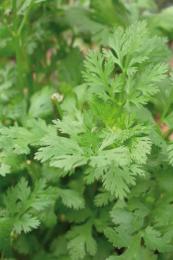
Most people are mistaken in thinking that cilantro and coriander are different spices. In fact, coriander is usually called the seeds of the plant, and its greens are called cilantro. And also this is a plant called Chinese parsley because of the similarity of the leaves and simply because cilantro comes from Asia.
Content:
- What are cilantro and coriander valued for?
- How cilantro and coriander are used by chefs
- Medicinal properties
- How to use cilantro
- Is there any harm in this plant?
What are cilantro and coriander valued for?
For a long time, cilantro has been grown in almost every corner of our planet and is valued for its aroma and healing properties. All over the world, this plant is a special seasoning in cooking. But not only culinary specialists were able to appreciate all the qualities of the plant. Perfumers, turning their attention to the extraordinary aroma of this representative of the flora, hastened to find use for it in their industry, adding cilantro to cosmetic products.
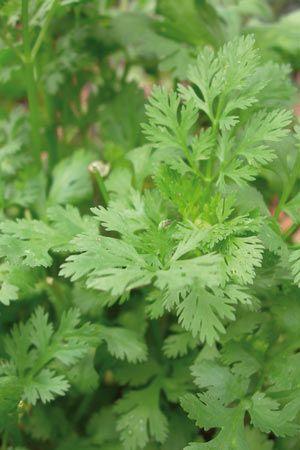
Only those seeds that have reached sufficient ripeness have their own unique smell. And those that are completely immature smell absolutely wrong: their smell is even somewhat unpleasant.
The cilantro in the photo to the right is a green annual herb plant of the Apiaceae family, with bare, branched stems. The smell of this plant, as we said above, is one of the most fragrant smells on the planet.
How cilantro and coriander are used by chefs
Fresh cilantro is an excellent addition to summer vegetable salads.Although it should be noted that it is also dried and used as a spice. But coriander is still much more often used by chefs as a food additive. After all, greens can only be added fresh or dried, and seeds prepared for future use are quite appropriate to store for a certain period of time and add to food if necessary.
Spicy fragrant sprigs of cilantro, added to a meat or fish dish, can completely transform the taste and smell of the dish. A variety of sauces, appetizers and even marinades acquire a unique aroma when dried cilantro is added.
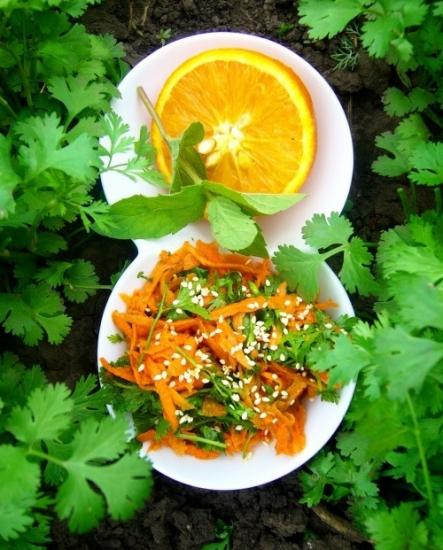
But coriander - plant seeds Most often used to keep meat fresh longer. For this purpose, a special marinade is prepared with crushed coriander seeds.
Cooks have not forgotten about baking: buns, muffins and other confectionery products become more flavorful when coriander is added when kneading the dough.
Even sausages, canned food, cheeses, or rather, some types of them, contain coriander seeds.
But the Germans went even further: they learned to include this spice in the composition of a foamy drink - beer.
Medicinal properties
This plant with two names contains simply a huge amount of the most beneficial substances. The fruits of the plant are especially rich in such substances. The seeds are rich in essential oils and this alone is enough to consider the plant medicinal.
But not only essential oils are a component of coriander. Tannins and alkaloids, no less important for humans than oils, are part of the seeds. But vitamins and a variety of microelements are concentrated in the green shoots of cilantro, or rather, in its twigs and leaves. These are the most valuable B vitamins for us, vitamins K, A, and even PP and E.But the minerals are represented by sodium, iodine, calcium and phosphorus. The highest content of potassium in cilantro is an essential microelement involved in the functioning of the heart muscle.

Decyl aldehyde, starch, dietary fiber, pectin and protein are all ingredients found in cilantro. Therefore, the benefits of cilantro are difficult to overestimate. And the calorie content of the plant is very low, so it cannot harm the figure in any way.
Traditional medicine has long paid attention to both cilantro - the fresh greens of the plant, and coriander - its seeds. That's why use all parts fragrant spice in the fight against many ailments: heart disease, diseases of the digestive system, diabetes, and a variety of colds, such as ARVI and bronchitis.
Doctors also noticed that cilantro has a beneficial effect on human skin and vision.
How to use cilantro
You can eat cilantro either fresh, simply by chewing its shoots, or make a variety of decoctions from it. Decoctions are used both internally and externally. This decoction is used externally to get rid of freckles and pigmentation on the face.
Essential oils, of which this plant has a huge amount, are successfully used in dentistry and in the treatment of juvenile acne.
An interesting fact is that the spice helps those who have had too much drinking: after finishing a meal with drinking, you can consume dry cilantro by mixing it with 1 spoon of alcohol. The next day, the hangover pangs will not be so severe. And the seeds themselves may well remove the smell of alcohol if you simply chew them.
Is there any harm in this plant?
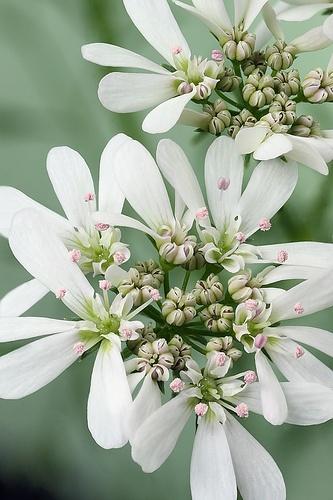
However, you should note that you should not overuse cilantro, like other spices.Therefore, you should not eat more than 4 g of coriander or 35 g of cilantro at a time. And those who have hypertension or coronary heart disease should not eat cilantro.
Side effects of this plant when overeating it: disruption of the menstrual cycle and insomnia. Essential oils may well cause allergies.

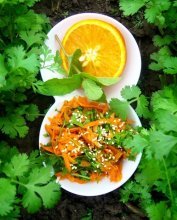

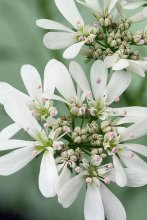
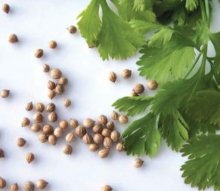
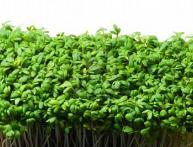
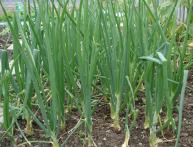
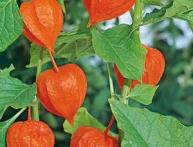
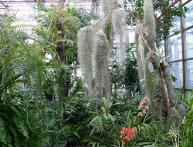
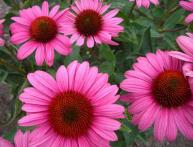
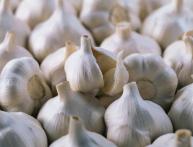

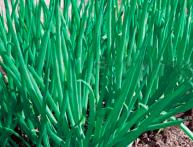
Comments
I really love cilantro - it’s a wonderful seasoning for meat dishes. I recently read that cilantro planted in a pot at home purifies the air, and my ancestors believed that it attracts money. In addition, coriander tincture can bewitch a man).
I really don’t like cilantro greens themselves, the taste and smell reminds me of crushed bugs ((but I just love the seeds themselves! I add them to meat and fish, everything turns out very tasty, although again, it’s not for everyone.
I am a big fan of all kinds of greens in cooking, so in my dacha I have a lot of space reserved for planting dill, parsley, cilantro, and basil. Salads, and more, with these herbs are not only tasty, but also healthy!
For five years now we have been planting this herb along with salads and parsley in our dacha at the insistence of my mother. The taste, of course, is not for everyone. At first, I couldn’t eat it at all, but now I treat it quite normally.
For five years now we have been planting this herb along with salads and parsley in our dacha at the insistence of my mother. The taste, of course, is not for everyone. At first, I couldn’t eat it at all, but now I treat it quite normally.